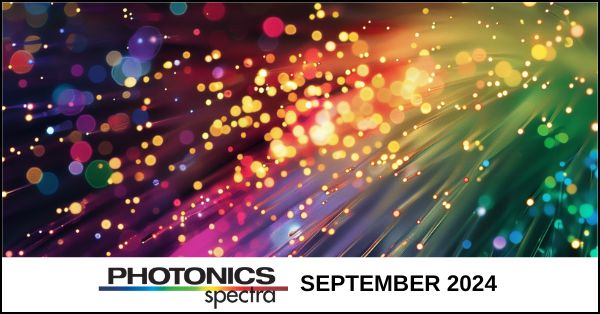Jun. 27, 2024

Meta-Optical Metrology
The convergence of optical metrology protocols and meta-, nano-, and micro-optics is reshaping existing measurement techniques while also paving the way for entirely new approaches. This intersection fosters advancements that challenge traditional optics at the component level and catalyze innovations in metrology, while also driving developments in imaging systems and other technology areas. While investment from big industry players such as Apple, Google, and Samsung have come to characterize this technology intersection, peeling back the curtain on the commercial solutions sheds light on the enabling technologies. This article prods a multifaceted dynamic: Test and measurement schemes are necessary to develop many systems that leverage the advantages of meta-optics, while at the same time benefitting (in many cases) from the very capabilities that meta-optics deliver.
Key Technologies: Optical metrology, meta-optics, flat optics, metasurfaces, DUV Lithography, polarization imaging, waveplates, DOEs, optics manufacturing, optical interferometry, ellipsometry
Optical Materials
Polymers and liquid crystals have become important materials for making useful optical devices for polarization control and for the measurement of polarization. The development of consumer products for displays has pushed forward the quality of the available materials and made them viable options for laser systems, precision optical systems and research applications including space flight optics. Many of the functions enabled by these materials cannot be accomplished any other way. In some cases other solutions exist but they can be implemented because of cost.
Key Technologies: Optical materials, polarization, polymers, liquid crystals
Large Optics
In the early 1990’s large optics were being redefined worldwide. The demand required by Lawrence Livermore National Laboratory’s National Ignition Facility, the James Webb space telescope and numerous other large telescope projects on the drawing board, the optics industry was faced with unprecedented technological challenges. Today's challenge is a new quantum step in large optics, motivated by the expansion of laser fusion technology and also the strategic demand for directed energy defensive systems. This article explores historic scale-up projects in astronomy and high energy lasers, and the lessons learned we must apply for future demand. It discusses the emerging growth drivers and what it means for our industry, with perspectives from industry professionals to identify and prod the underlying challenges for the industry and how it will adjust and adapt.
Key Technologies: Large optics, laser fusion, telescope optics, directed energy optics, high-power laser optics
PICs: Design for Test
The concept of “design for test” plays a crucial role in standardizing the design and testing processes of photonic integrated circuits (PICs). Essentially, it involves designing circuits while proactively considering test requirements and restrictions from the outset. However, implementing this concept can be challenging. When combining foundry requirements with those of testing partners, potential pitfalls may arise. This article identifies and examines design best-practices and explores how PIC design software platforms facilitate the design-for-test process. This is achieved through Test Design Kits (TDKs), which enable PIC designers to test their designs efficiently and cost-effectively after fabrication. TDKs encourage designers to view testing as an integral part of the design process — rather than an afterthought — by providing parametric test templates, design rules, and layout guidelines. This mindset shift not only reduces engineering costs for both designers and test houses but also accelerates the time-to-market for photonic-powered products. The article incorporates the perspectives and insights from test providers as well as designers and fabricators.
Key Technologies: PICs, PICs design, photonic design software
Xtreme Photonics: Optical Communications
As the number of satellites in space increases, fresh problems appear and existing risks grow. Radio frequency spectrum is becoming increasingly congested. Given that satellites perform critical functions, such as Earth observation for weather forecasting, and GPS services, radio interference, which degrades the quality of communication, is dangerous. Dropped calls, slow internet connections, and interrupted broadcast services could have a huge impact on disaster response and emergency services, which increasingly depend on satellites. Against this backdrop, photonics offers a solution. Thanks to the narrow shape of a laser beam, optical communication isn’t prone to interference from other signals in the same way radio is. It doesn’t spread or ‘leak’. Interference and interception are almost impossible. Given our reliance on satellites, it’s paramount that photonics is explored as a potential solution to radio congestion before a dangerous incident forces us to.
Key Technologies: Optical communications, laser communications, optical telecom
Industry Insights: Navigating the Shift from Laser Notice No. 50 to Notice No. 56: Implications for Laser Manufacturers
The upcoming transition from Laser Notice No. 50 to Notice No. 56 marks a pivotal moment for laser manufacturers, signifying major regulatory and compliance shifts in the industry. This article takes aim at demystifying the complexities surrounding this transition, exploring the technical and regulatory nuances of Notice No. 56, highlighting its impact on manufacturing practices, safety protocols, and international market accessibility. Author William Burgess provides contextual and actionable insights and strategies for manufacturers to seamlessly adapt to these new regulatory landscapes, ensuring continued innovation and safety in laser technology.
Key Technologies: Laser Safety, Standards
Download Media Planner